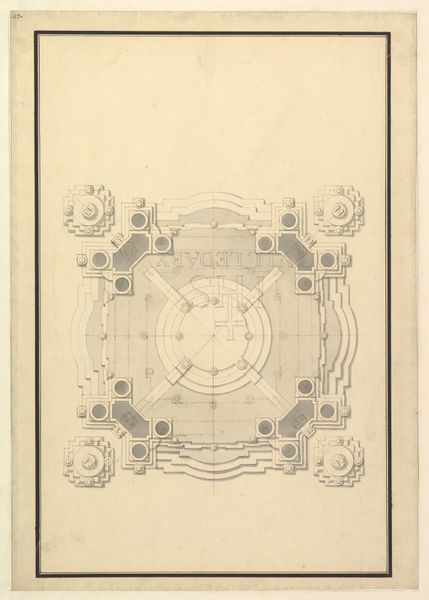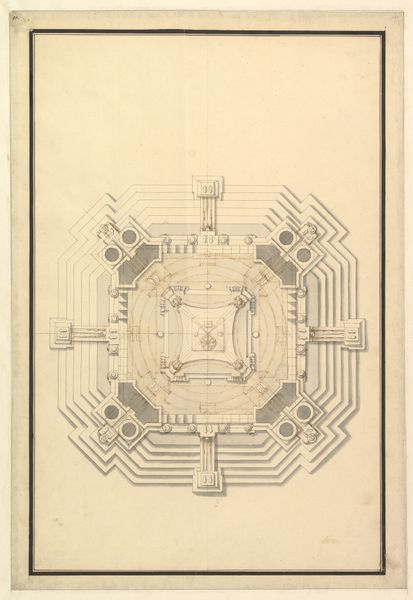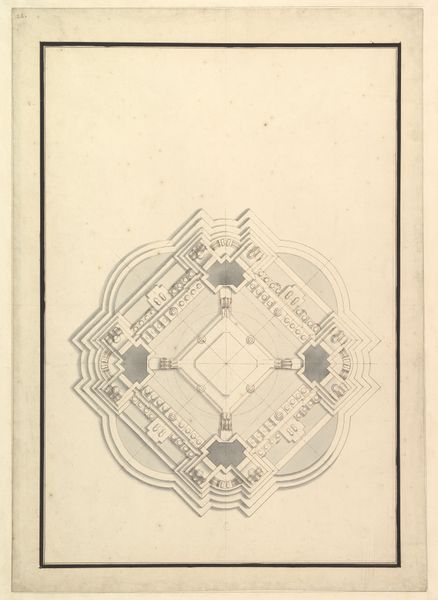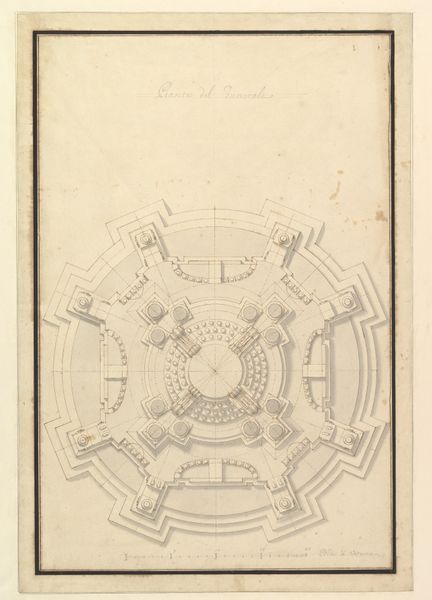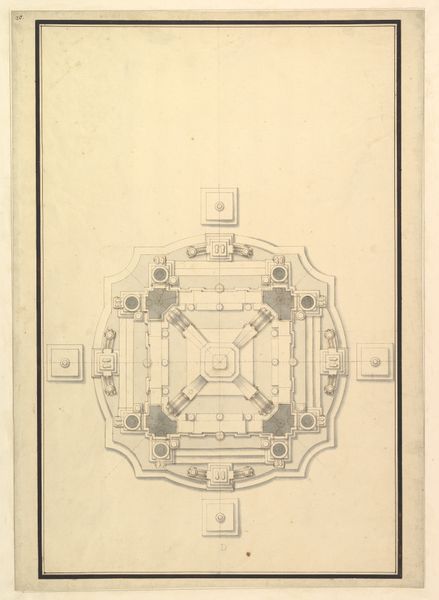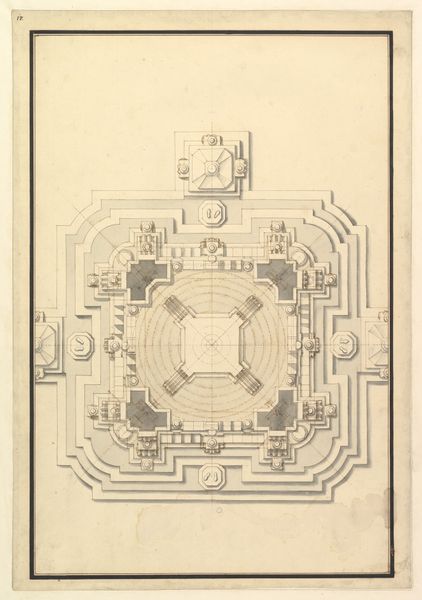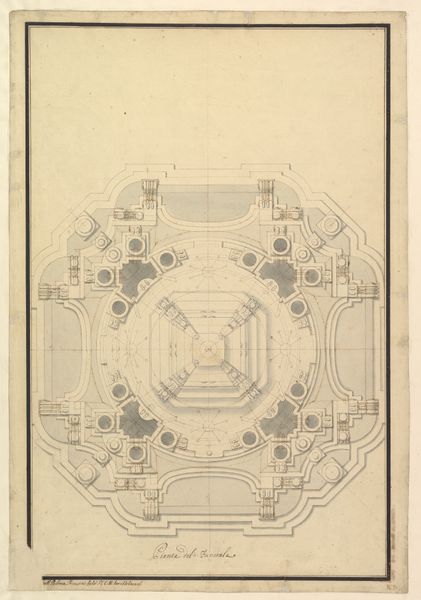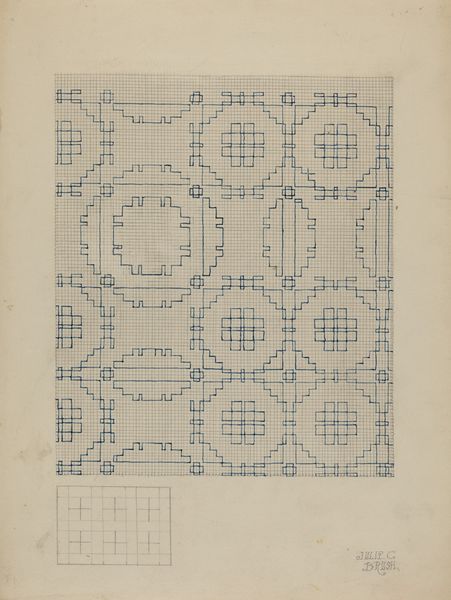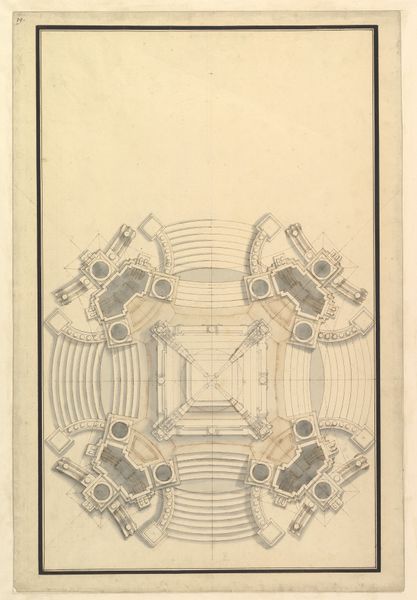
Ground Plan for a Catafalque for a Duke of Wolfenbüttel-Brunswich, probably Anton Ulrich (d. 1714) 1696 - 1756
0:00
0:00
drawing, print, architecture
#
drawing
#
baroque
# print
#
geometric
#
line
#
cityscape
#
architecture
Dimensions: 20-1/2 x 14-5/16 in. (52.1 x 36.4 cm)
Copyright: Public Domain
Editor: Here we have Giuseppe Galli Bibiena's "Ground Plan for a Catafalque for a Duke of Wolfenbüttel-Brunswich, probably Anton Ulrich (d. 1714)," created sometime between 1696 and 1756. It looks like a blueprint for an incredibly ornate mausoleum or stage set! What can you tell me about this drawing and the context surrounding its creation? Curator: This work highlights the spectacle inherent in Baroque art, where even death becomes a theatrical display. Consider the social and political function of elaborate funerals during this period. These catafalques weren’t just about mourning; they were potent demonstrations of power, status, and dynastic legitimacy. Think about the audience; who would have been invited to witness this grand display, and what message was intended for them? Editor: So it's not just a somber occasion, but also a political performance? It's interesting how architecture itself becomes a form of propaganda. Curator: Precisely. Bibiena, from a family of renowned stage designers, understood how to use visual drama to influence public perception. These catafalques often involved temporary architectural structures erected within churches or public spaces. Notice the geometric precision and intricate details. What effect do you think this level of detail would have on the viewer? Editor: I imagine it would inspire a sense of awe and perhaps even intimidate the viewer. It emphasizes the Duke's importance and wealth. The very planning of such an elaborate structure speaks volumes. Curator: Indeed. The commission of such a design, even if never fully realized, solidifies the Duke's legacy and the family’s continuing claim to power. How does this change your understanding of the role of art and architecture during the Baroque period? Editor: It makes me realize art isn't just about beauty, it's also deeply intertwined with power structures and social dynamics. Thanks! Curator: A keen observation! It shows how artists in the Baroque era served not just as creators, but as orchestrators of visual rhetoric within a complex socio-political landscape.
Comments
No comments
Be the first to comment and join the conversation on the ultimate creative platform.
